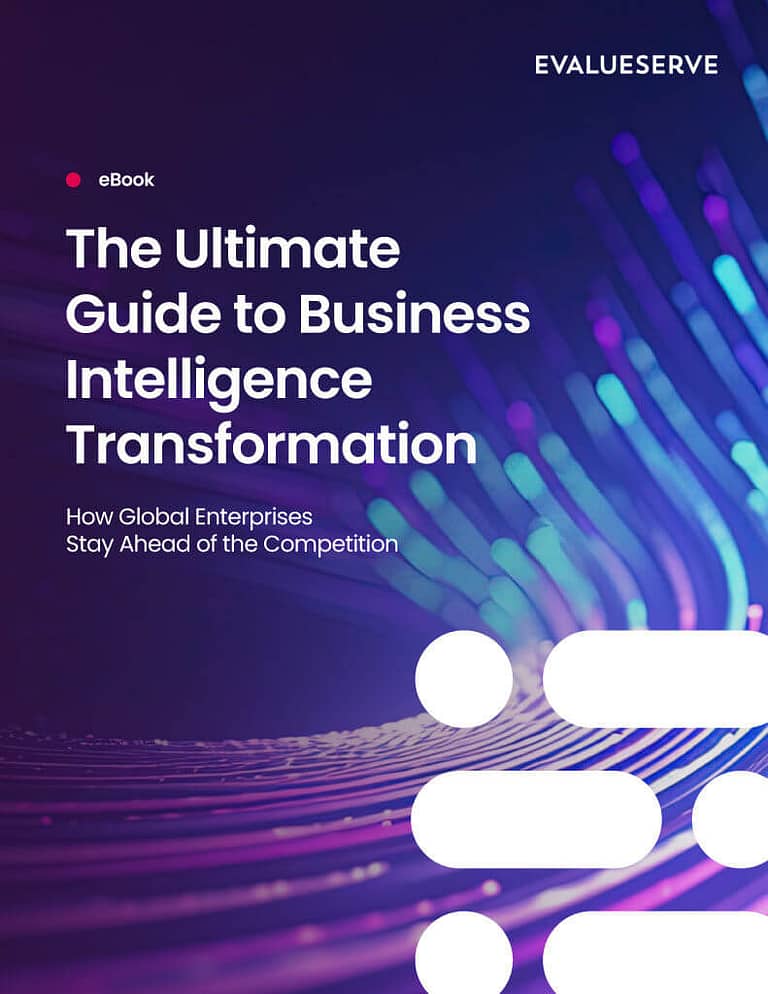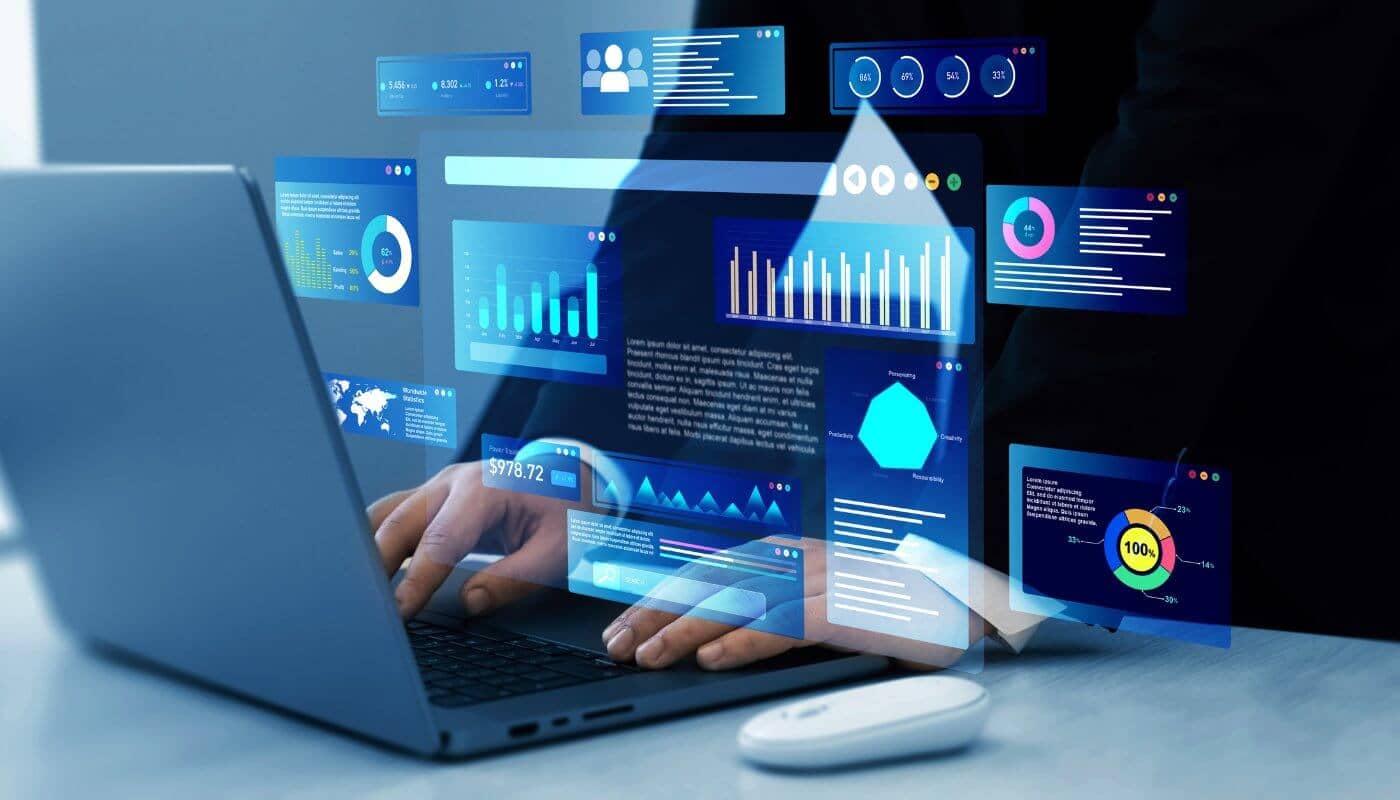In today’s modern business landscape, Business Intelligence (BI) and Analytics stand as critical cornerstones for businesses hoping to gain competitive advantage.
These technologies empower organizations to translate vast volumes of data into actionable insights. Given the ever-growing pool of potential information, ranging from sales data to customer sentiment, and encompassing everything from hash-tagged product mentions to patent filings, the task can seem daunting.
Fortunately, AI-powered data analytics is here to save the day. By leveraging data analytics and BI, companies are not merely optimizing their operations but also steering their business strategies in informed and effective directions.
How has Business Intelligence Changed and Modernized?
Business Intelligence has a surprisingly long history, the term being listed in a 1865 publication by Richard Miller Devens called the “Cyclopædia of Commercial and Business Anecdotes. Back then, it was a catch-all term for all the information gathering processes what inform business strategy.
Naturally, in 2023 BI tends to have a greater focus on data analytics and AI than human legwork, although we humans are still left with the challenging task of implementing those all-important insight-driven strategies
Here are the key components of modern data-enriched business analytics:
- Data mining and aggregation: identifying patterns and trends in data and gathering similar data together to identify insights.
- Trend Forecasting: Using the accumulation of evidence to track trends into the future, offering an evidenced forecast.
- Predictive Modelling: Creating adaptable models to improve and manage the forecasting process.
- Data Visualization: Finding visual and automated ways to deliver insights and trend analysis, such as reports, dashboards, notifications, and chatbots.
Another vital component of the process of business analytics is the human element – domain expertise that helps shape predictive models, identify appropriate datasets, and hone analyses.
The Gartner Glossary defines analytics and business intelligence as “an umbrella term that includes the applications, infrastructure and tools, and best practices that enable access to and analysis of information to improve and optimize decisions and performance.”
As we’ll explore in this article, a fully integrated and 360-degree approach is necessary to deliver the full promise of such a definition.
Business Intelligence Versus Business Analytics
While these terms are sometimes used interchangeably, the business analytics demonstrates a marked sea change from the historic process of information gathering. In brief:
- Business Intelligence – looking back at what happened in past decision-making, and why it happened. Historically, this process has given leaders insights into strategies that have worked and those that haven’t. The limitations of BI alone are that it doesn’t offer a path towards future strategy.
- Business Analytics – this takes the process one step further, by finding patterns and trends in the data that offer an insight into what may occur in future, and what to do about it. In other words, the analytics component doesn’t just suggest possibilities, but offers evidenced predictions and alternative outcomes, depending on the strategies taken.
The Power of Integrating BI and Analytics
Given how globally integrated most businesses are in terms of markets and supply chains, it’s a more challenging task than ever before to keep on top of the competition, and gain prominence in a sector.
What well-integrated BI and analytics contributes is a baseline of evidence to inform strategic decision-making, minimize risk, and seize opportunities, before rivals make their inevitable moves.
Incorporating BI and data analytics into your strategic toolset offers a plethora of benefits:
- Better Business Decisions: Data-driven insights allow for enhanced and informed decision-making, paving the way for organizational growth.
- Faster Responses to Change: In an ever-evolving business landscape, BI-equipped companies can swiftly adapt to market changes, ensuring their continued relevance and dominance.
- Improved Productivity: Businesses witness marked improvements in their operational efficiency, leading to increased productivity levels.
- Enhanced Innovation: The encouragement of novel solutions, tailored to address fresh business challenges and needs.
Business or Intelligence Analytics isn’t foolproof. Unpredictable factors such as climate change, global pandemics, economic downturns, or political upheaval can create unpredictable and large-scale disruption in any sector.
However, most of the time, there’s little that works better than gathering the rich insights that BI and analytics can provide.
The Role of Tools in Analytics and BI Strategy
There are many warehousing and visualization tools that have revolutionized the landscape of data analysis and visualization. Some of their scalable architecture and their interactive visualization capabilities enable organizations to derive deeper insights.
However, while these tools play a pivotal role, they are merely components of a comprehensive BI and analytics strategy.
Just as any carpentry tool can be abused, can break, or can rebound to the detriment of the user, an analytic tool misunderstood or misapplied can supply inadequate or misleading insights.
Crucially, such tools don’t often come packaged with the domain expertise that allows for the creation of high-performing models and fine-tuned AI-powered analytics. That’s where Evalueserve prides itself on service innovation: BI and analytics working in harmony with human knowledge.
Business Intelligence Modernization: The Evalueserve Solution
Understanding the challenges businesses encounter while scaling, adopting, and utilizing their existing BI systems, Evalueserve has launched its BI Modernization managed services.
Key benefits include:
- Optimize BI Scaling: Leverage automated, integrated, and adaptive modules to scale with ease.
- Boost User Access and Adoption: A user-friendly, self-service platform available across multiple devices, ensuring broad adoption.
- Amplify Data-driven Insights: Unearth untapped revenue streams, comprehend customer behavior, detect prevailing market trends, and promptly identify potential challenges.
- Domain Experts: Over 5000 of them, knowledgeable in sectors ranging from FinTech to Healthcare, Entertainment to Global Philanthropy.
Why Modernize Your Business Intelligence
Business Intelligence and Analytics are disciplines that can’t rest, since they must mirror innovations in AI, automation, and data science.
BI and data analytics can’t stand still; their models and underlying architecture must constantly be updated to reflect the ever changing modern business landscape.
This means that partnering with the right managed services partner can be the difference between leading the pack and falling behind.
How Evalueserve's BI Modernization Managed Services and Solutions Works
When helping clients modernize their BI operations, Evalueserve’s methodology is both detailed and strategic. Here are some of its main components:
- Advisory: Align strategic metrics, justify Return on Investment (RoI), assess the existing technology stack, and develop a future roadmap.
- Data Preparation: Embrace Enterprise Data Management, Big Data Engineering, Cloud Data Lake/Data Warehouse infrastructure, and ML Engineering & Operations.
- Visualization: Transition to new visualization platforms, create user-centric apps/microservices, go beyond mere dashboards (as Forbes’ Bernard Marr suggested) to enhance user access, storytelling, and experience.
- Delivery: Offer training, facilitate continuous monitoring and optimization, and ensure robust governance and security mechanisms.
Everything from storage to security and privacy must be considered, particularly then competitor and customer data is mined for information. The system must be upgradable and modular, so that new components can be plugged in as and when required.
Our analytic tools, such as the Analytics Virtual Assistant that uses generative AI to make your data more accessible, were created using our modular AIRA (AI for Research and Analytics) technology. We’ve found that incorporating models pre-trained on domain-specific data that can be incorporated into your legacy ecosystem not only expedites BI modernization’s time to ROI realization but also exponentially increases its numerical accuracy and quality of insights.
Harnessing the power of data analytics and BI is non-negotiable for businesses aiming to excel in the modern era. Evalueserve’s BI Modernization managed services have been shaped as a holistic solution, ensuring businesses maximize the potential of their data and analytics strategies.
Interested in Redefining Your BI Capabilities?
Dive deeper into Evalueserve’s BI Modernization managed services and witness a transformation in your business intelligence and analytics endeavors. For more detailed information, visit Evalueserve’s solutions page or fill out our contact form today.

eBook
The Ultimate Guide to Business Intelligence Transformation
How Global Enterprises stay ahead of the competition


